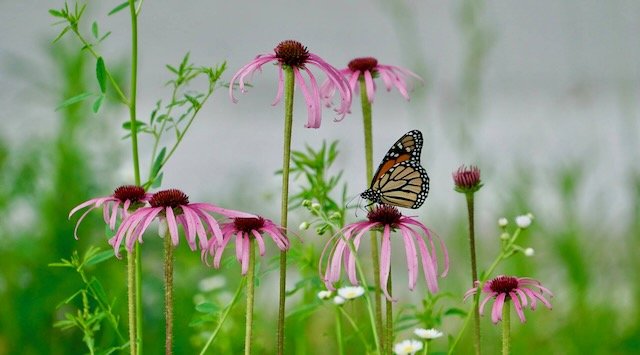Field notes by J. Cantrell
I guess there all kinds of secrets. A naturalist by trade is always questioning nature and trying to understand and appreciate more and more. We may take our different observation skills and hikes to different environments, seasons, and even the times of the day. Nocturnal (nighttime) may be the least explored, and twilight (the crepuscular times) perhaps the most fruitful, for it is the interface of two different work-shifts of wild animals.
I love the quote from author Roald Dahl, “And above all, watch with glittering eyes the whole world around you because the greatest secrets are always hidden in the most unlikely places. Those who don’t believe in magic will never find it.” So this December let us look to trails with a diverse time of day in focus.
“Who cooks for you? Whoooo cooks for you all…?” If we could place “human words” in place of a bird’s vocals, “who cooks for you?” fits perfectly for the call of the barred owl. That is just one of the intriguing sounds breaking the winter silence on an early evening.
Fewer people seem to take advantage of the winter hiking opportunities or even a short stroll during the cooler evenings. However, this month is just the thing for staying active, staving off some sedentary habits and unquestionably enjoying some nature study. Homeschooling parents and many elementary school teachers know well the children’s book titled Owl Moon, by Jane Yolen. It bodes well as a theme of fall and winter moonlit hikes, by having owl discoveries in mind.
We have four year-round resident owls in Missouri. The barn owl has a comeback story similar to the peregrine falcon and bald eagle. They were in trouble in years past due to poor understanding and the use of some hazardous pesticides (affecting food chain dynamics and human health). Thankfully, the barn owl and the bald eagle recently have been taken off the endangered species list. Barn owls are simply special in my book! There are so many ways to provide for them with good habitat and the placement of barn owl boxes in open country. Please contact the Shoal Creek Conservation Education Center if you are interested in free plans for nesting boxes.
Eastern screech owls are the smallest of the four residents, and they have two color varieties; one is red, and the other is gray. Old tree snags left on the landscape benefit screech and barred owls and many other types of wildlife for cavity shelters. Insects are the choice for cuisine in the warmer season. In the fall and winter season, they modify their winter diet to small rodents, shrews and an occasional sparrow. They too lend their voices to the winter nights for it is time to stake out and defend a home range in order to seek a mate. I love pointing out their call note to families and youth, to me it sounds like a long ghostlike horse whinny.
The two most common owls, and most likely to be seen and heard this month are the barred owl and the great horned owl. The great horned owl vocalizes what we expect an owl to say, a simple deep throaty sounding “whooo” from a male owl. The female owl telling a clear, higher-toned “whooo”. The great horned owl is a top nocturnal predator in our area. They take refuge in a variety of habitats from the urban scene to the countryside. We can determine great horned owl territories on our walks by distinguishing male’s vocals in different areas and listening for a female companion callback. There are no fences between wildlife’s territories – in the owls’ case the boundaries are set up by calls and body language.
Winter crepuscular walks are amazing and they bring so many new things to be enjoyed in nature. Magic just might be in the glimpse of a teddy bear looking barred owl, which asks, “who cooks for you?” So utilize those warm clothes and walking shoes; take in a variety of hikes for the season – you will have glitter in your eye when you hear the first barking of a barred owl. I look forward to hearing your trail stories. – Jeff
PS and just a reminder for Christmas gift ideas for the nature lover in your family. The Wildcat Glades Friends group (at the Shoal Creek Nature Center, Joplin, MO) has the MDC Natural Events calendars revealing the secrets of animal & plant activities day by day. Please visit the nature center and support the friend’s group programming by browsing the binoculars, calendars, birdhouses and so much more.
Jeff is the advisor for the local MO Master Naturalist chapter and may be reached at jeff.cantrell@mdc.mo.gov
Barred Owl
Barn Owl
Eastern Screech Owl
Great Horned Owl




